TIM KLEIN
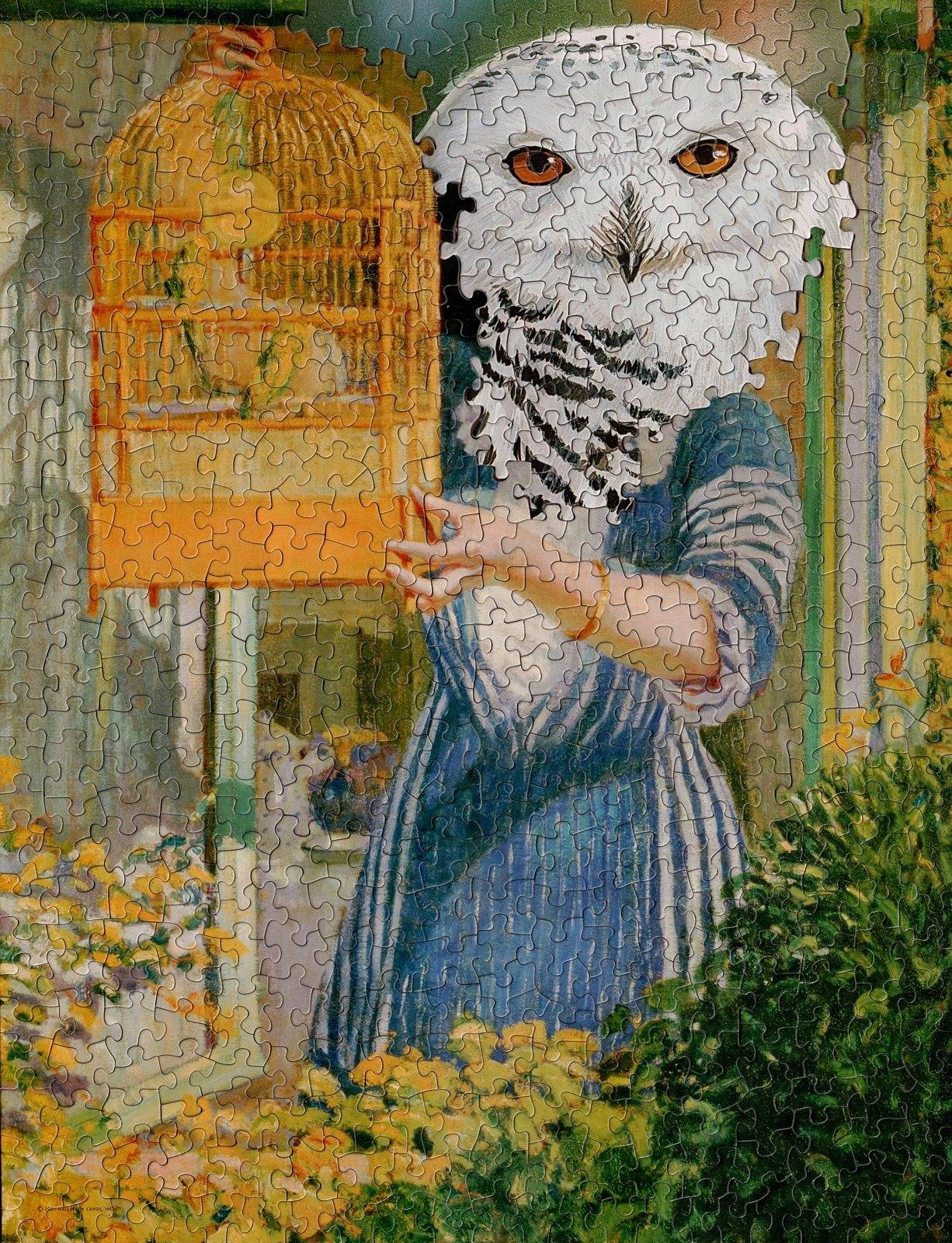
Who Holds the Cage Holds the Bird, image courtesy of Tim Klein's website.
Artist Tim Klein combines jigsaw puzzles to create playful and surreal montages.
Tim Klein is an artist based in Vancouver, Washington, who searches for vintage puzzles at thrift shops and garage sales, then combines them into a new unusual image. Many puzzle publishers reuse the same die-cut pattern, resulting in different puzzles composed of pieces of the same shape and size. Klein discovered that if he found two or more puzzles cut from the same die, he could swap out pieces, creating a new playful and surprising image.
The resulting images range from fantastical hybrid creatures—a horse or dinosaur merged with a train, a woman with an owl’s head—to contrasting landscapes and settings, or kaleidoscopes of complimentary patterns.
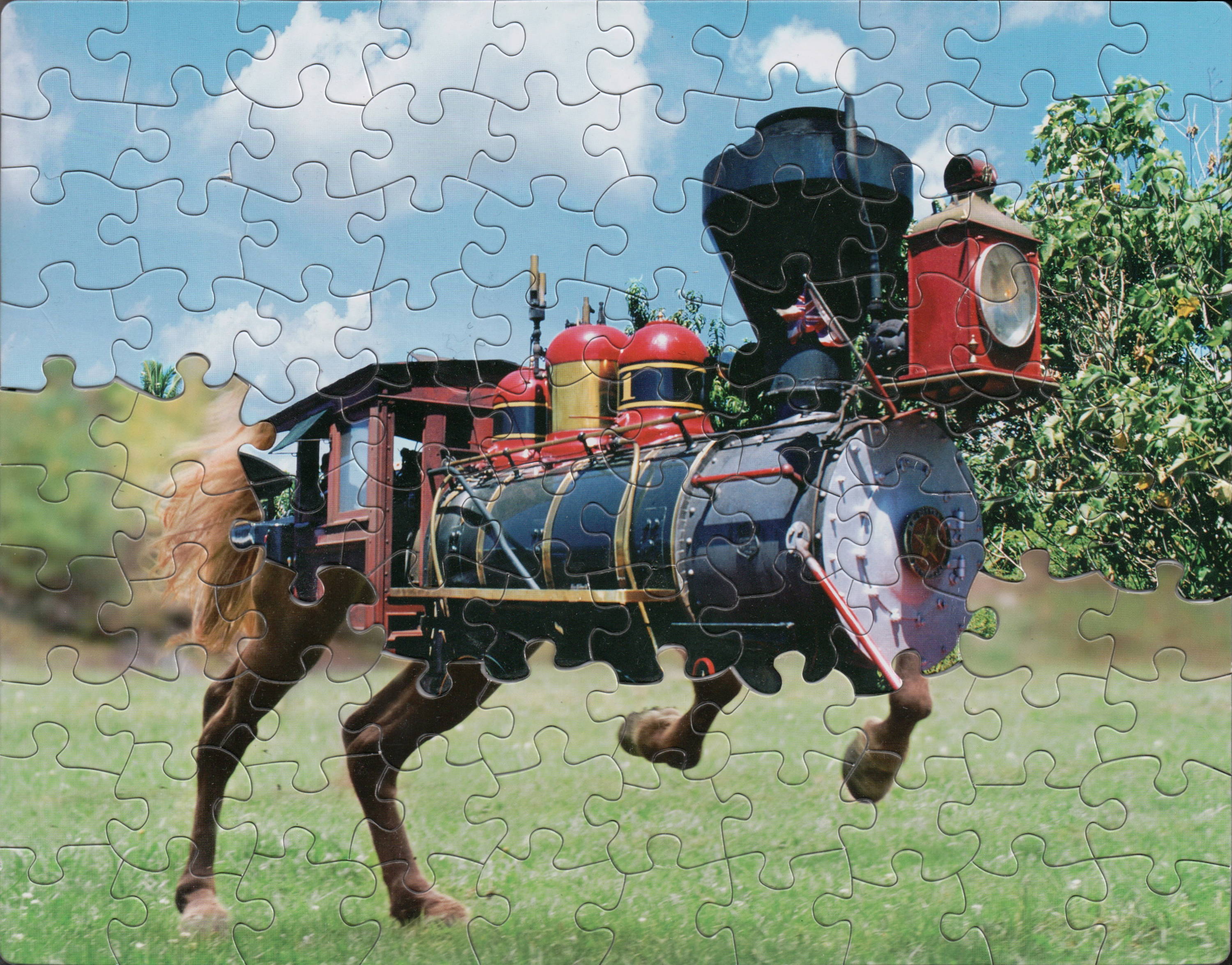
Iron Horse, image courtesy of Tim Klein's website.
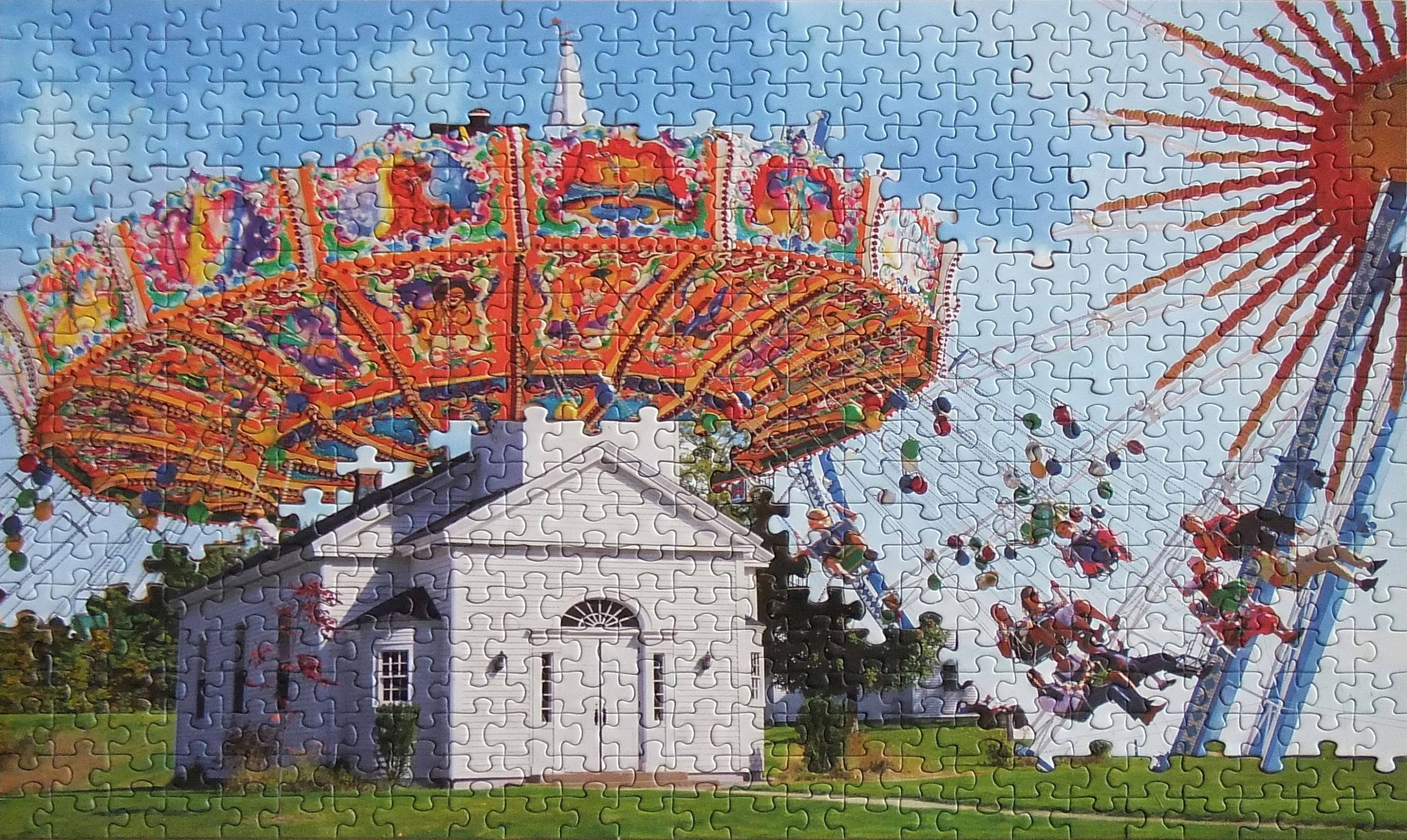
The Mercy Go-Round (Sunshine and Shadow), image courtesy of Tim Klein's website.
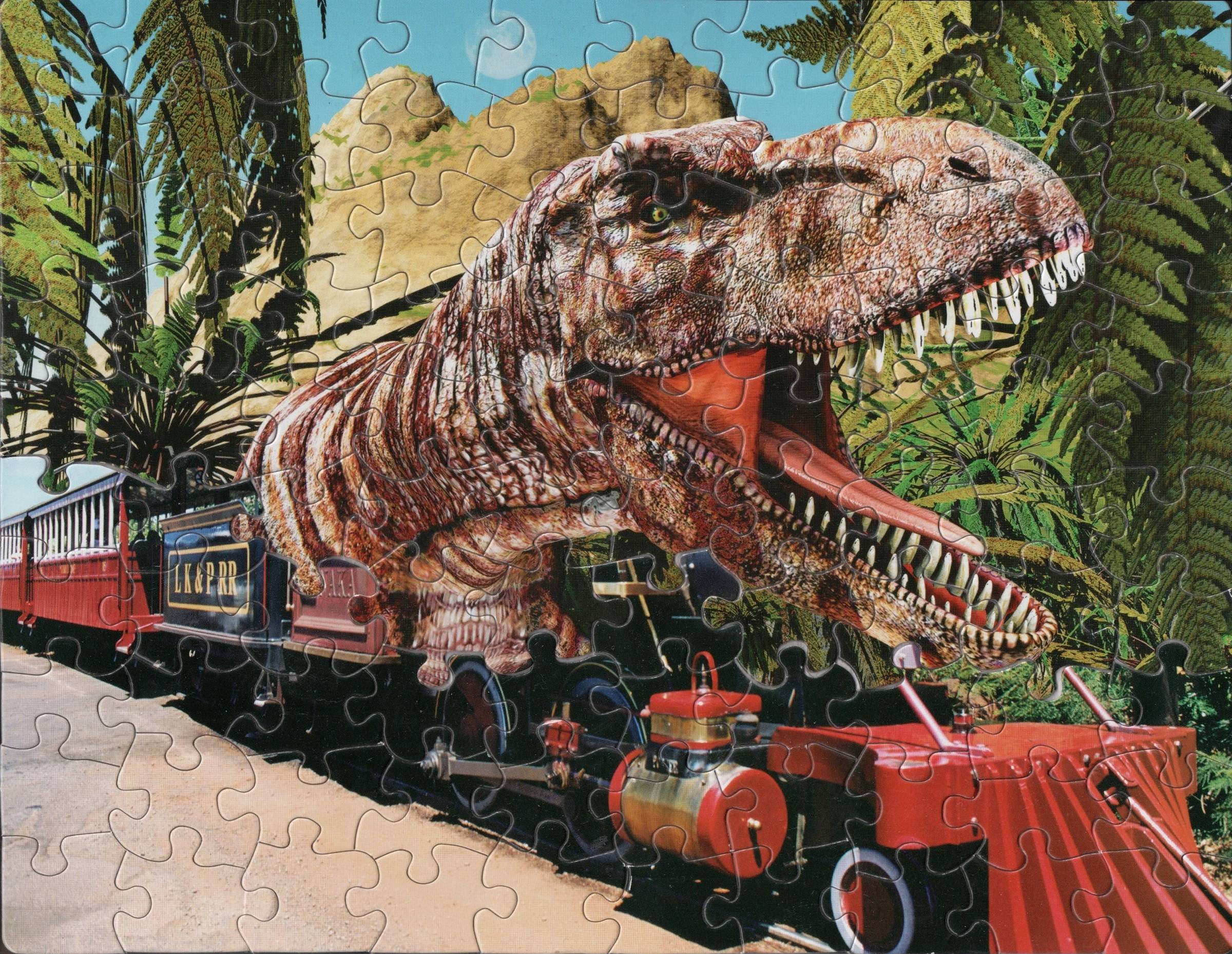
T'rainosaurus Rex, image courtesy of Tim Klein's website.
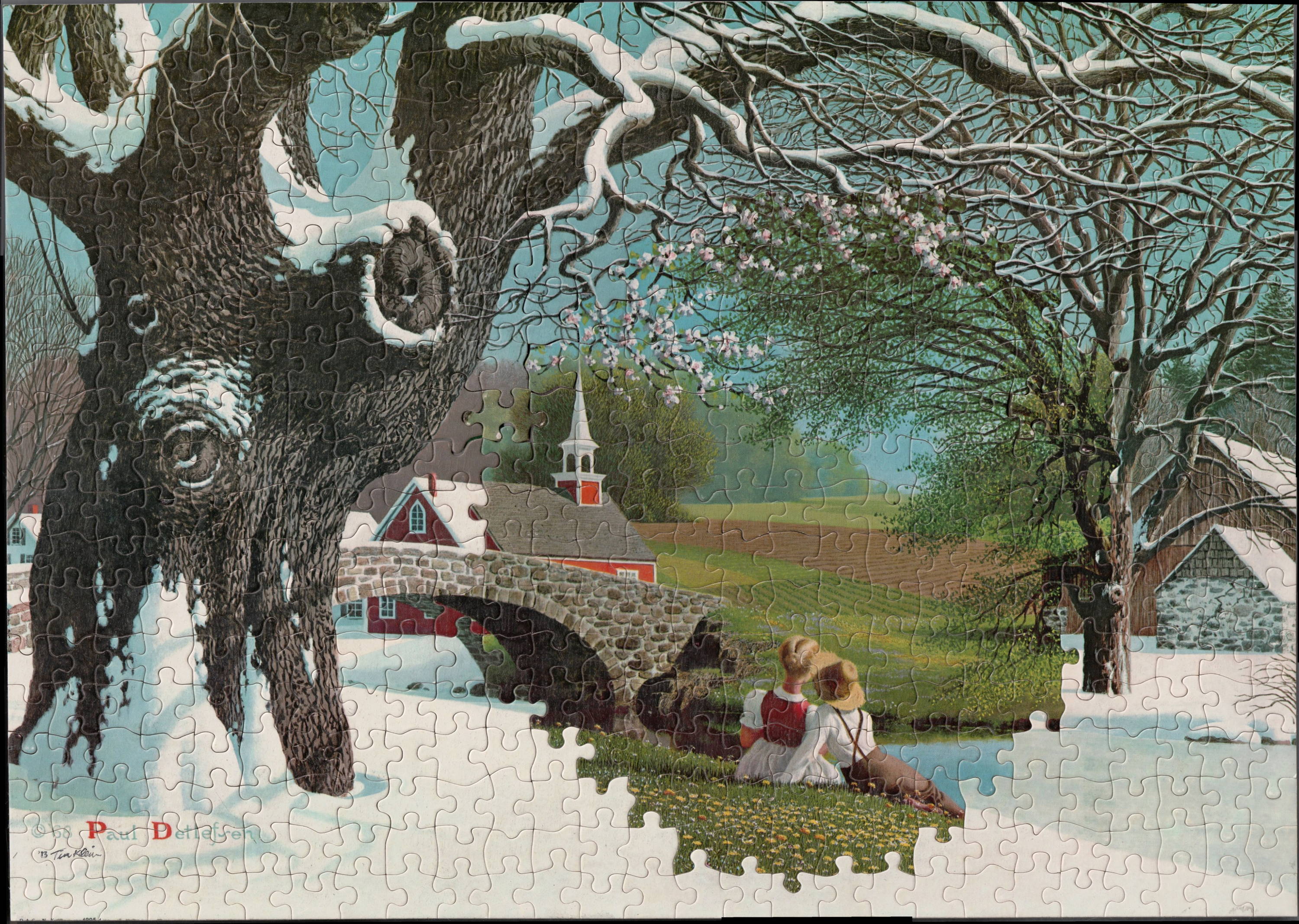
Klein reflects, “I take great pleasure in ‘discovering’ such bizarre images lying latent, sometimes for decades, within the cardboard boxes of ordinary mass-produced puzzles. As I shift the pieces back and forth, trying different combinations, I feel like an archaeologist reconstructing some curious, shattered artifact.”

How the West Was Won, image courtesy of Tim Klein's website.
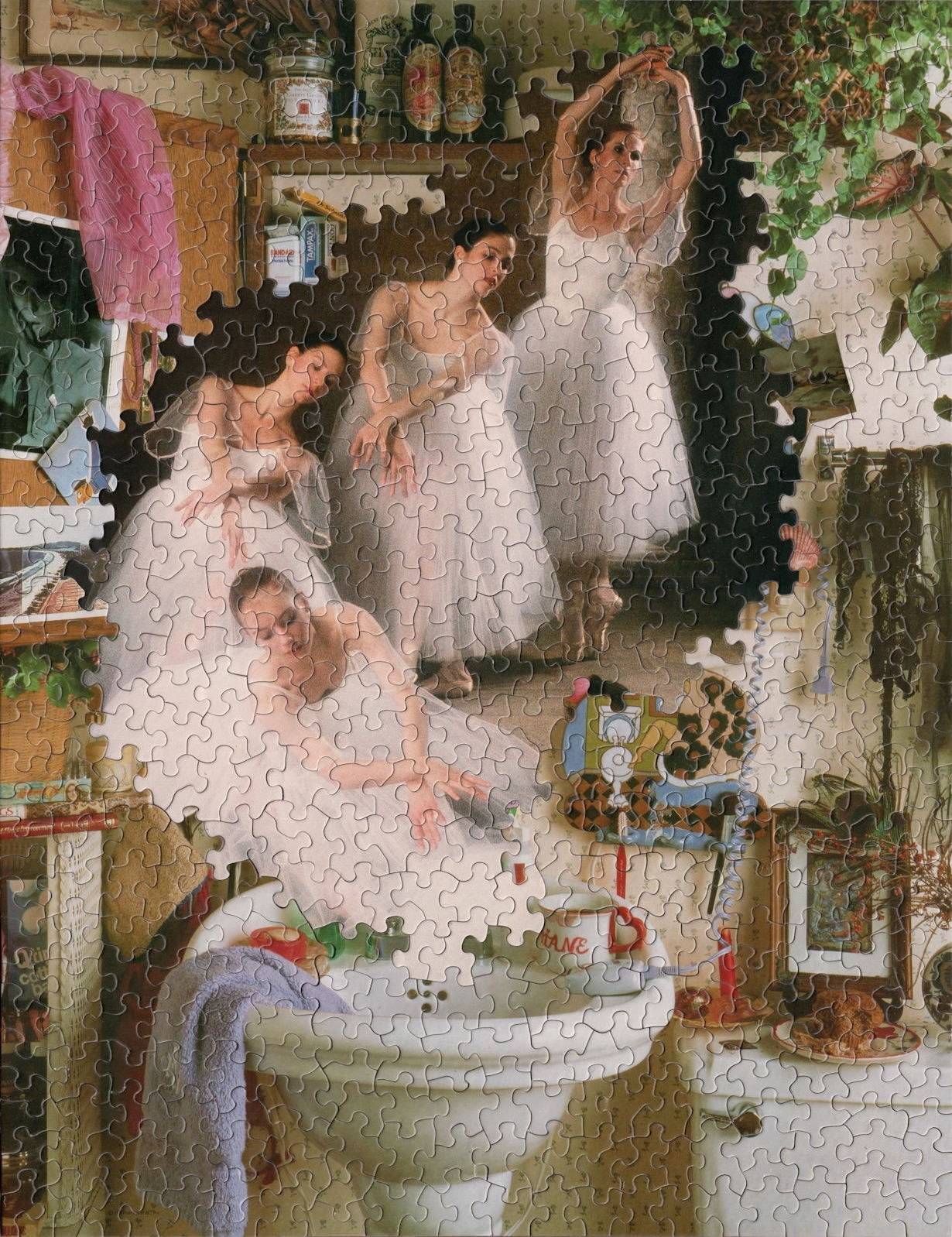
The Dance of the Bathroom Cleaning Fairies, image courtesy of Tim Klein's website.
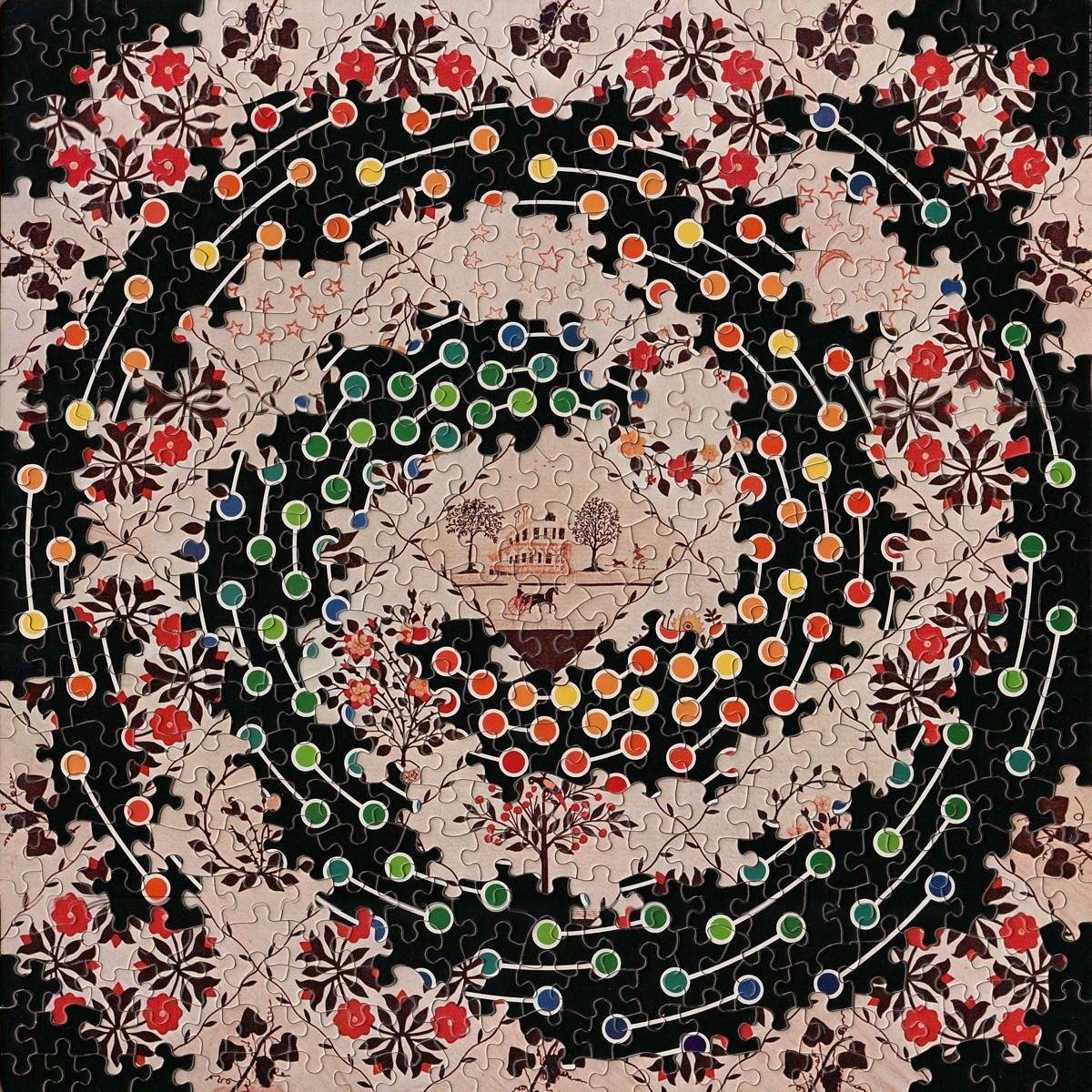
Chrona-A, image courtesy of Tim Klein's website.
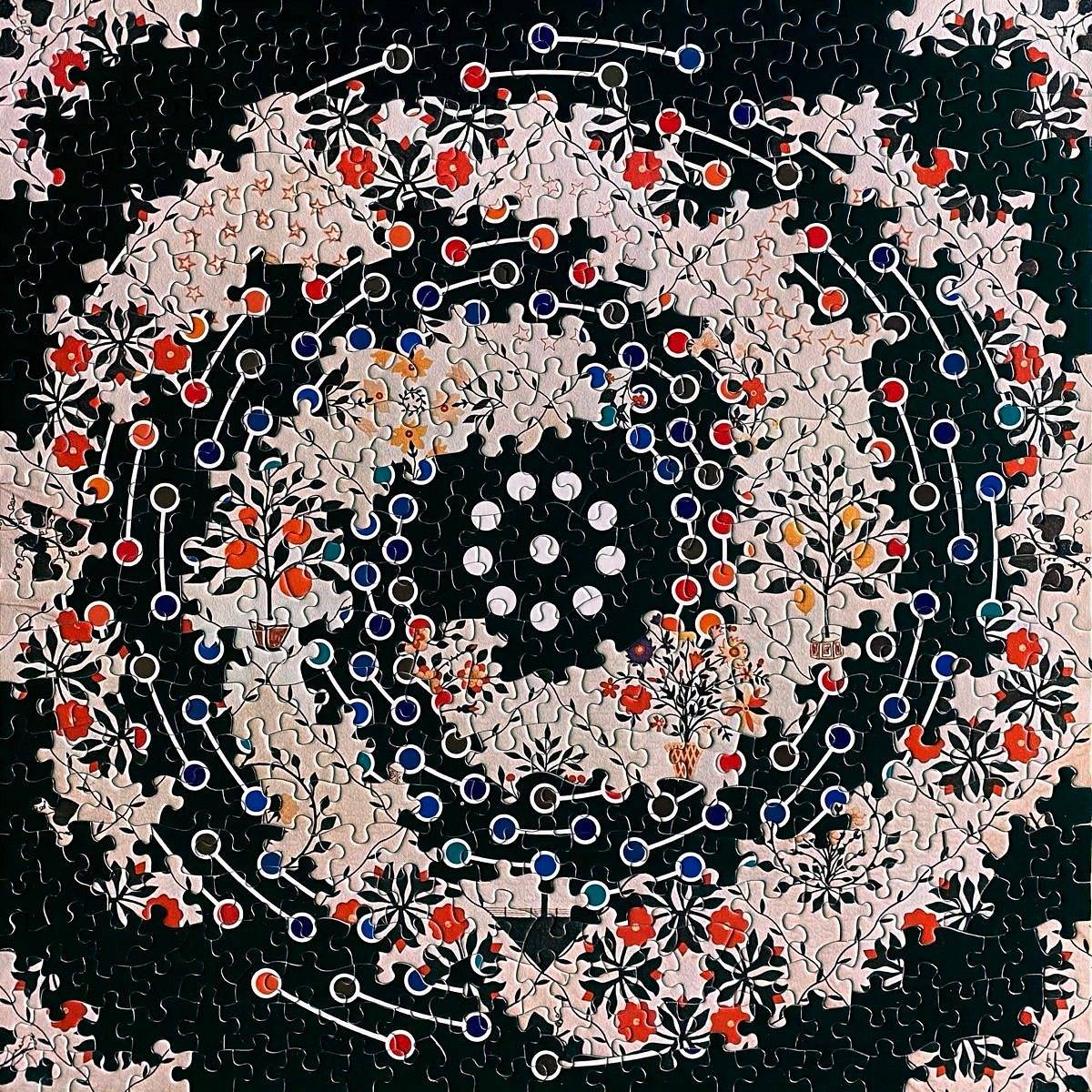
Chrona-B, image courtesy of Tim Klein's website.
In a shift from working with puzzles with recognizable subject matter, Tim's Chrona pieces are beautiful, geometric works made from two puzzles published in the 1970s. One showing a folk art quilt by Emeline Dean from the 1860s, and the other showing an abstract artwork called “Spectral” by John Willenbecher, from the 1960s, Chrona-A and Chrona-B (pictured above) are inverses, each one using all of the puzzle pieces not used in the other.
To learn more about Tim Klein and his work, you can visit his website here.

